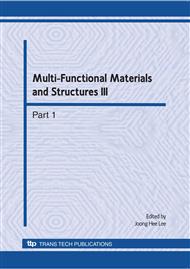p.515
p.519
p.523
p.527
p.531
p.535
p.539
p.543
p.547
Determination of Number of Layers and Stacking Sequence of Composite Bicycle Frame
Abstract:
Due to the high specific strength, high specific modulus and good fatigue characteristics, carbon/epoxy composite bicycle frame can have superior performance to aluminum bicycle. As the strength of composite frame varies according to the number of layers and stacking sequence, it is necessary to determine the appropriate number of layers and stacking sequence for designing light weight composite frame. The frame is divided into six parts, i.e. head tube, seat tube, top tube, bottom tube, seat stay, and chain stay parts. Since different stress levels are generated among the different parts, different numbers of layer with different stacking sequences are considered for each part. Three different loading conditions, i.e. horizontal loading, vertical loading, and pedal loading, are considered in the analysis. The superb stacking sequence and number of layers of the composite frame with the lowest failure index were determined which satisfy the three different loading conditions.
Info:
Periodical:
Pages:
531-534
Citation:
Online since:
August 2010
Authors:
Keywords:
Price:
Сopyright:
© 2010 Trans Tech Publications Ltd. All Rights Reserved
Share:
Citation:


